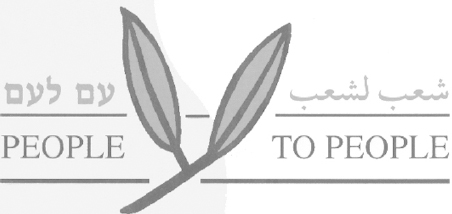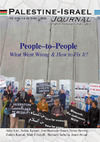It has become conventional wisdom that the People-to-People efforts did not achieve their goals. The clearly observable fact is that the levels of public support for peace and a non-violent resolution of the conflict in both communities were deeply affected by measures on the ground which could not prevent a breakdown in the peace process.
Our joint experience in P2P activities in the past reflected a clear discrepancy between the Palestinian and Israeli readings of P2P with which we contended, while coordinating and administering them.
Overcoming Lack of Trust and External Obstacles
The major obstacle at the very initial stage was lack of trust. Israeli participants were reluctant to stay on the Palestinian side for the first encounter until they met with the Palestinian participants. Another problem was related to the obstacles encountered when trying to obtain permits for Palestinian participants to attend encounters on the Israeli side. Some Palestinian participants were denied permits, which created tension and dominated the discussions of the encounters. External "facts on the ground" and the political changes impeded the structured and planned discussions.
Since the Aqsa Intifada, there was almost no follow-up contact between Israelis and Palestinian participants. The contact between Palestinians and Israelis appeared to fail to produce any meaningful influence on the attitudes of the participants within and beyond the timeframe of the meetings.

Soul-Searching and Strategy-Searching
Our respective perspectives and interpretations on P2P during our joint activity were never identical and at times even counterpoised. Today, as we review this area of activity, with a certain detachment of time and space, we arrive at some similar and some divergent assessments. Nevertheless, we both welcomed the opportunity to serve as co-coordinators of this very timely edition of the Palestine-Israel Journal on the Future of People-to-People, which offers the rare and welcome opportunity for critical reflection.
Today, there is a need to soberly analyze the reasons for People-to-People not fulfilling its mandate as it was originally conceived. The need for such an analysis is not for the purpose of a dispassionate intellectual exercise, nor an act of collective bereavement. Rather, it fulfils the need for both a soul-searching and strategy-searching attempt to learn from the very extensive experience of all the stakeholders' perspectives. Framing hard and relevant questions and receiving honest and grounded answers, we hope, will enable all interested parties to examine the current relevance of P2P, while avoiding the mistakes made in the past, so as to enable effective peace building and ultimately peacemaking efforts in the future. Many of the issue's contributors describe and elaborate on what they see as the conditions for such success, and ways to achieve them.
At present, joint efforts face severe physical barriers between the societies and within Palestine, coupled with the fact that, with rare exceptions, Palestinians are not allowed into Israel and Israelis into Palestine. There are also profound psychological barriers of mistrust between the two sides. These new-old obstacles remind many of the 1970's when Peace Now activists found 'creative' ways to meet their Palestinian interlocutors. Most of the broad based P2P activity of the 1990's, which sought to reach out to multiple sectors in both societies, has been severely reduced, though continuing efforts of joint solidarity and humanitarian activities geared towards struggle against the Israeli occupation and Track II meetings have generally transcended the turbulence. Significantly, many donors, amidst careful reassessments, have resumed their support for People-to-People activities.
People-to-People Still Has a Meaningful Role
This issue will embrace the complexity of the subject matter by initially delineating the divergent definitions of the term, People-to-People. The term reflects much of the inherent ambiguity in the field. Does it refer to meetings between nations or individuals, attempts for systemic social change or down to earth relationship building?
Consequent articles will focus on Israeli, Palestinian and third party perspectives in regards to People-to-People as an official initiative and retrospective evaluations of how P2P worked and the main lessons to be drawn. There is a shared view presented in these articles that there were problems and obstacles and that there is still a meaningful role for People-to-People to address the current situation. The opinions presented in this issue acknowledge the need for contact as well as the need for more effective strategy.
The issue's roundtable digs deep into the various understandings and complex contexts of People-to-People's past obstacles as a window toward potential current opportunities.
Finally, an article on the Lessons Learned from Northern Ireland depicts the multi-target and multi-level strategies and efforts from a not so distant conflict.
We hope that this joint enterprise makes a modest contribution to the evolving discourse on peacemaking, peace building and reconciliation between Israelis and Palestinians and the creating of a different and more hopeful set of "facts on the ground."

